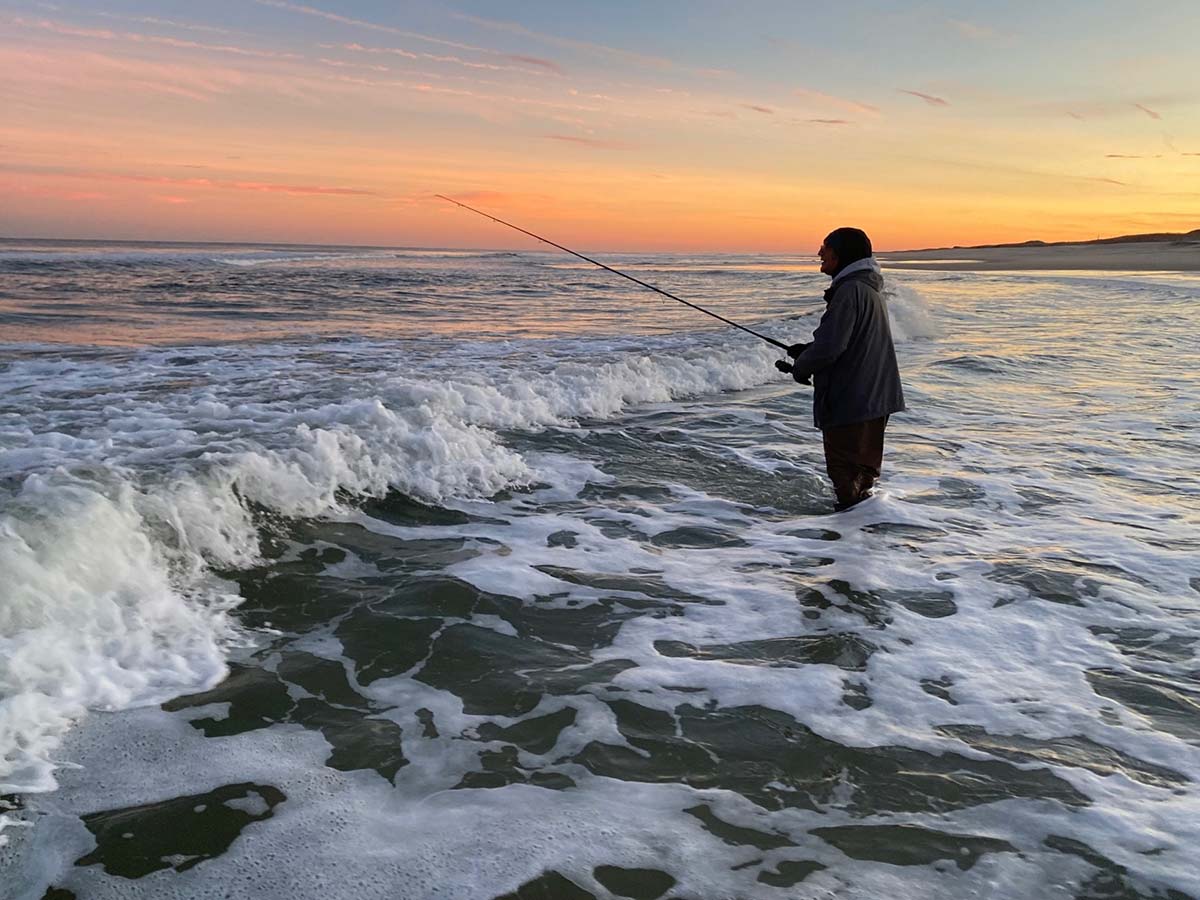
The “science” behind striped bass behavior during the fall run.
Fishermen, we have finally made it! The 2023 striped bass fall is well underway and the results have been amazing so far. There is no doubt striped bass are one of the most beloved saltwater fish today; many also don’t know it is even the official state fish of New Jersey, South Carolina, Virginia, Maryland, Rhode Island, New York, and New Hampshire. There’s nothing that compares to the thrill of bringing them in.
Although we all have our own traditions and bait strategies to catch these monsters, there is an element of recreational fishing a lot of us fishermen overlook: the “science” behind striped bass behavior during the fall run.
I sat down with John Tiedemann, Monmouth University’s Director of the Marine and Environmental Biology and Policy Program, to discuss the background of the fall natural event. He is the founder of “Stripers for the Future,” an educational program aimed to engage all fishermen to learn more about striper conservation and being good stewards of the species.
“One interesting behavior about striped bass, unlike other fish, is that they typically return to the estuary where they first spawned. Scientists refer to this as site fidelity; some bass also exhibit site fidelity for wintering sites as well as summer foraging sites. We suspect the reason why this happens has to do with evolutionary adaptation,” said Tiedemann.
He continued, “What we know about the fish returning to spawning grounds is primarily based on tagging studies; we follow the species’ movements over the years, using both the classic streamer tags and now using acoustic telemetry to track movements in greater detail.”
I also asked him what behaviors make them different compared to other fish. “Typically, stripers are a migratory/schooling fish. This is why bays and rivers like the Hudson, Raritan, Chesapeake, Delaware, and Roanoke systems typically become populated heavily during the spring as the fish enter these areas to spawn.”
He also clarified that some stripers don’t travel as far as others. In other words, there are both migratory and resident stripers in each of these systems. “There are some fish that remain as residents and others that migrate after reaching 2 or 3 years old. That is why you can catch striped bass almost all year round in many areas within their range.”
Tiedemann also emphasized paying attention to water temperatures during those times of the year when migratory stripers are moving through coastal waters. For example, he said if the weather is good and the water stays warmer, to not be surprised if the fall run is still profitable until mid-January in the southern states of the Northeast region.
“Typically, their migratory movement is north in the spring and summer, and they will settle anywhere from Montauk to Maine to forage during the summer. In autumn, as bait starts to migrate out of local rivers and bays, their movements are opposite; that’s why we get the fall migration.”
I asked Tiedemann how fishermen could learn to fish better with the science and be more informed.
“For fishermen to be more informed about the best times to target stripers, they should pay attention to these broad migratory patterns: late spring movement compared to fall movement from a geographical standpoint would tell you more about where and when to concentrate their fishing effort.”
Tiedemann also emphasized the ‘whys’ of the possession limit. The idea is to protect certain stronger year classes and allow fish to have at least spawned once or twice before harvest. In addition, the maximum size is intended to protect the older and mature female fish. “The older female striped bass actually produce the most eggs; that’s why we are now protecting the larger fish.”
“What we are trying to do with my Stripers for the Future program is to disseminate information on best handling practices for catch and release. The key is for anglers to minimize stress and release fish as quickly as possible without prolonged exposure to the air.”
“There are also more prudent ways to catch and release striped bass to allow them to have better chances of survival. Try not to fight the fish to exhaustion and handle them carefully when getting them off the hook in the water whenever possible so it’s not stressed from the air exposure. Once unhooked, release the fish calmly headfirst so that water is flowing in the mouth and over the gills during the release. If the fish needs to be revived prior to release, move it forward or in a figure eight pattern, never backward.”
In short, learning more about the science behind recreational fishing could not only benefit the environment but also provide better insight into catching striped bass!




